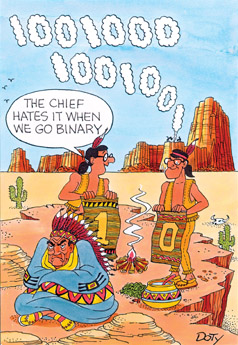May 12, 2006
FOR IMMEDIATE RELEASE
NEW YORK, NY— Smoke signals are simple enough to understand. The communications specialists of yesteryear met and decided, perhaps, that one puff of smoke by itself means "Hello!" or two puffs mean "Danger!" Smoke signals can still save lives in an emergency, since three signals in a row is universally understood to mean "Help!"
According to the Copper Development Association, sending information over copper wire is not really much different from sending smoke signals, except it is more like sending millions - even billions - of puffs of smoke every second.
The Magic of Conduction
 Click here for a high-resolution version of this photo.
Click here for a high-resolution version of this photo.A copper wire one millimeter in diameter and one meter in length weighs about seven grams and contains about 100 billion trillion copper atoms, and the same number of conducting electrons! Electrons are very light, so it is very easy to accelerate them in the presence of an electric field (also known as a "voltage"). As a consequence, a copper wire is extremely sensitive to electrical pulses.
Just as a tsunami travels much faster than the actual molecules of water, so also does an electrical signal, or a pulse of electricity, move through a wire faster than the electrons. In this case, the pulses are transmitted through the copper conductor as electromagnetic waves. Such waves would travel at the speed of light except that they are slowed down slightly by the effects of the insulating material surrounding the wire. Speeds of one-third to more than one-half the speed of light are typical.
With modern computer chips having speeds measured in billions of cycles per second (gigahertz), it is possible to put many hundreds of millions of pulses onto networks every second. As a result, we all can enjoy the benefits and reliability of electronic data transmission, the modern analogue of smoke signals. And so, because of copper, today's communications are really smokin'.
For more information about the history of copper in electrical engineering, visit www.copper.org/education.
###
